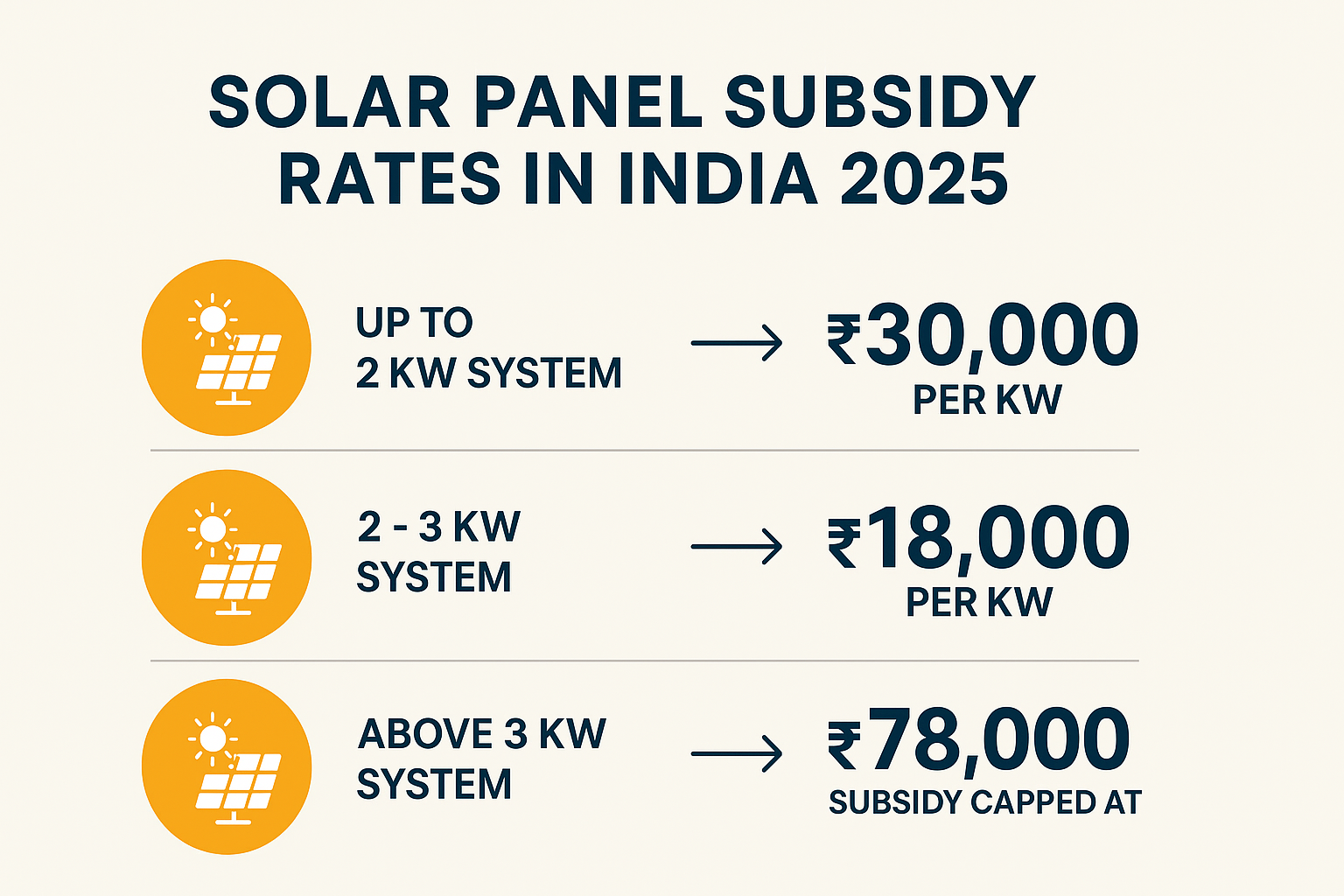Here are the latest subsidy amounts under the Rooftop Solar Programme Phase II:
1 Up to 2 kW system → ₹30,000 per kW
2 2 kW – 3 kW system → ₹18,000 per kW
3 Above 3 kW system → Subsidy capped at ₹78,000
Example: For a 3 kW system, you get a subsidy of ₹78,000. Even for a 5 kW system, the maximum subsidy remains ₹78,000.
Who Can Apply for Solar Subsidy?
subsidy is available for residential homes only. The following are eligible:
1 Individual homeowners with rooftop space
2 Residents of housing societies or group housing societies (RWA/GHS)
3 Consumers applying through DISCOM-approved vendors
(Note: Commercial and industrial users are not eligible for subsidy.)
The cost of solar panels can vary depending on several factors:
1. Type of Solar Panel – Monocrystalline panels are more efficient but slightly expensive, while polycrystalline panels are more affordable.
2. System Capacity – A small 1kW system will cost less, whereas a 5kW or 10kW system for bigger homes will require higher investment.
3. On-Grid vs Off-Grid – On-grid systems (connected to electricity supply) are cheaper, while off-grid systems (with batteries) cost more due to storage requirements.
4. Quality & Brand – Reputed brands and high-efficiency modules may come at a premium but ensure durability and better performance.
5. Government Subsidy – The Indian government provides subsidies under the Rooftop Solar Scheme, which significantly reduces the final cost for homeowners.
Average Solar Panel Price in India (2025)
Here’s an approximate cost range for different system sizes:
(Prices may vary slightly depending on the brand, installation, and location.)
How to Apply for Solar Panel Subsidy Online?
Applying for solar subsidy is simple through the National Rooftop Solar Portal. Follow these steps:
Benefits of Solar Subsidy for Homeowners
1 Reduced installation cost – saves up to ₹78,000.
2 Short payback period – investment recovered in 3–5 years.
3 Free electricity for 20+ years – huge lifetime savings.
4 Eco-friendly – reduces carbon footprint and supports clean energy.
Things to Keep in Mind
1 Only grid-connected rooftop systems are eligible.
2 Installations must be done via DISCOM-approved vendors.
3 The subsidy goes to the consumer’s bank account, not the vendor.
Frequently Asked Questions (FAQs)
Q1. How much subsidy do I get for a 5 kW solar system?
* You will get a maximum subsidy of ₹78,000, even if your system is larger than 3 kW.
Q2. Can commercial buildings get solar subsidy?
* No. Subsidy is available only for residential households.
Q3. Is the subsidy available in all states?
* Yes, the scheme is applicable across India through DISCOMs.
Q4. How long does it take to get the subsidy?
* Usually 1–3 months after installation and DISCOM inspection.
Solar panel subsidy for homes in India is a golden opportunity for homeowners to cut electricity bills and adopt sustainable energy. With government support under the PM Surya Ghar Yojana, the cost of rooftop solar has become much more affordable.So, if you are planning to install solar panels at home, now is the best time to apply and enjoy the benefits of free electricity for years to come.
